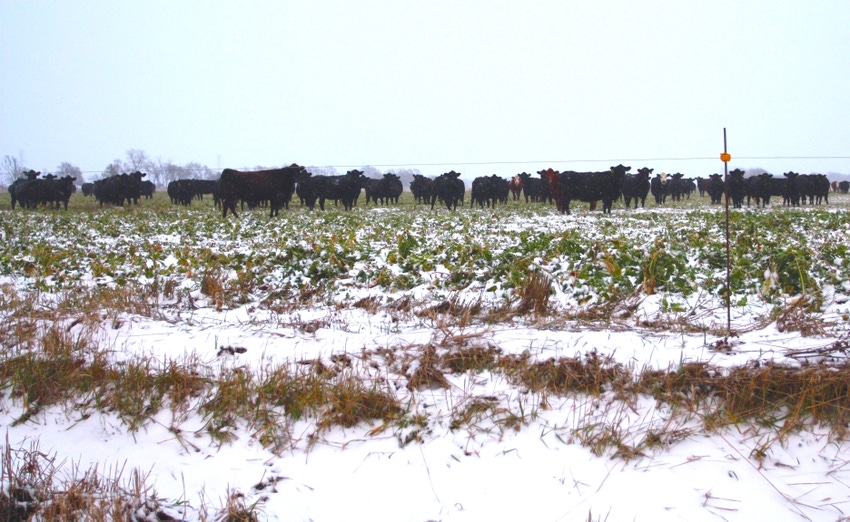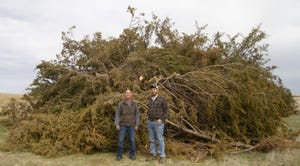Factor in wind chill when determining cows’ energy needs
Avoid cold stress by factoring in wind chill, hair coat and actual temperature to determine appropriate energy needs for the cow herd.
December 14, 2016

There’s a bite to the air these days as winter has finally arrived in the northern states across the country. As the season settles in to stay, producers must compensate with adequate feed, shelter and easily accessible water sources to address the needs of gestating cows.
Keeping in mind both energy needs and the requirements of the growing fetus as the cow enters the third trimester, there are a few numbers to keep in mind.
According to Warren Rusche, South Dakota State University Extension beef feedlot management associate, “As a general rule, for every degree that the effective temperature is below the lower critical temperature, the cattle’s energy needs increase by 1%. For instance, if the effective temperature is 17°F, the energy needs of a cow with a dry winter coat are about 15% higher than they would be under more moderate conditions. That energy requirement jumps up to about 40% higher under those conditions if the hair coat is completely wet or matted down with mud.”
Cold stress can greatly impact both the pregnant cow and calves in the feedlot, and producers must adjust accordingly.
Rusche adds, “It’s important to remember that cattle can adapt to short term weather changes relatively well without a significant impact on performance. Cattle can deal with a few cold, miserable days without suffering long-term effects. However, ignoring the energy costs of long-term cold stress greatly increases the risk of poor performance later.”
Adjusting energy and protein needs during these critical periods is important. We can’t forget to factor in the wind chill when determining how much the cow herd should be offered during the cold weather months.
For example, if the temperature is 30°F and the wind speed is 10 mph, the effective temperature drops to 18°F. If the wind jumps to 30 mph, the effective temperature drops to -6°. So a relatively warm 30°F day becomes extremely cold if the wind really decides to blow. As a result, cattle will start to feel cold stress more distinctly because of the wind.
“Any kind of available protection, whether natural or man-made, can be very valuable in reducing wind chill and the negative effects of cold environments,” says Rusche.
Remember that things are exacerbated depending on the condition of the cows’ hair coat. By now, hair coats should be thick; however, it’s important to recognize if the hair is wet or dry as that will increase her energy requirements, as well.
Read Rusche’s entire column on SDSU’s iGrow.org by clicking here.
The weather may be cooling down, but your cattle don’t have to suffer because of it. Keep these tips in mind when calculating the herds’ energy needs and adjust accordingly as the wind picks up.
The opinions of Amanda Radke are not necessarily those of beefmagazine.com or Penton Agriculture.
About the Author(s)
You May Also Like


.png?width=300&auto=webp&quality=80&disable=upscale)


